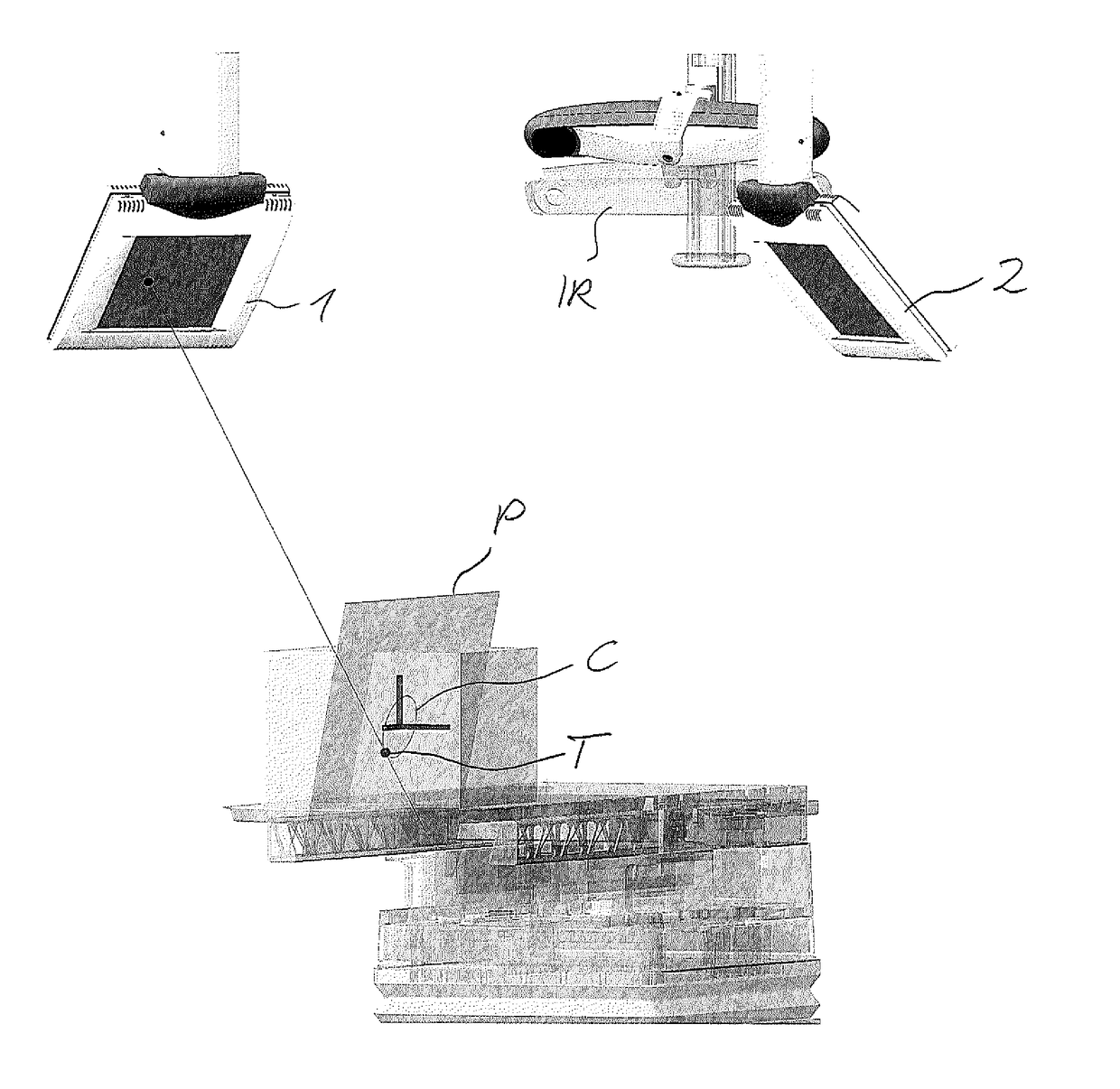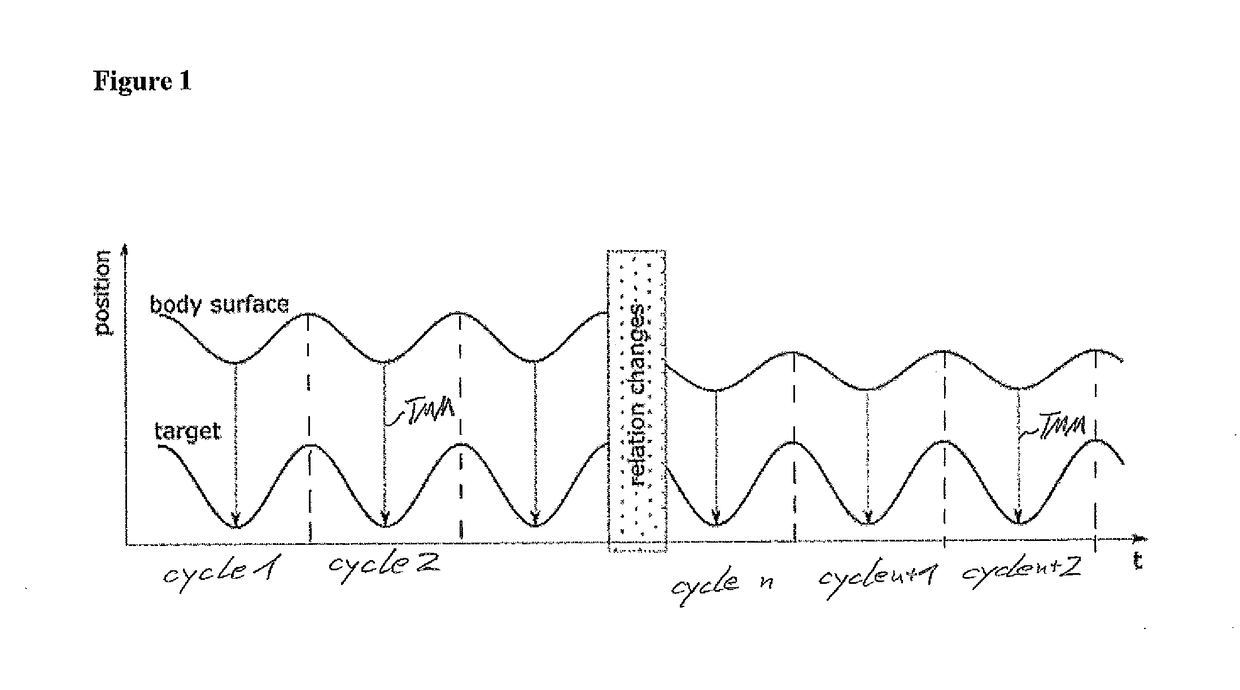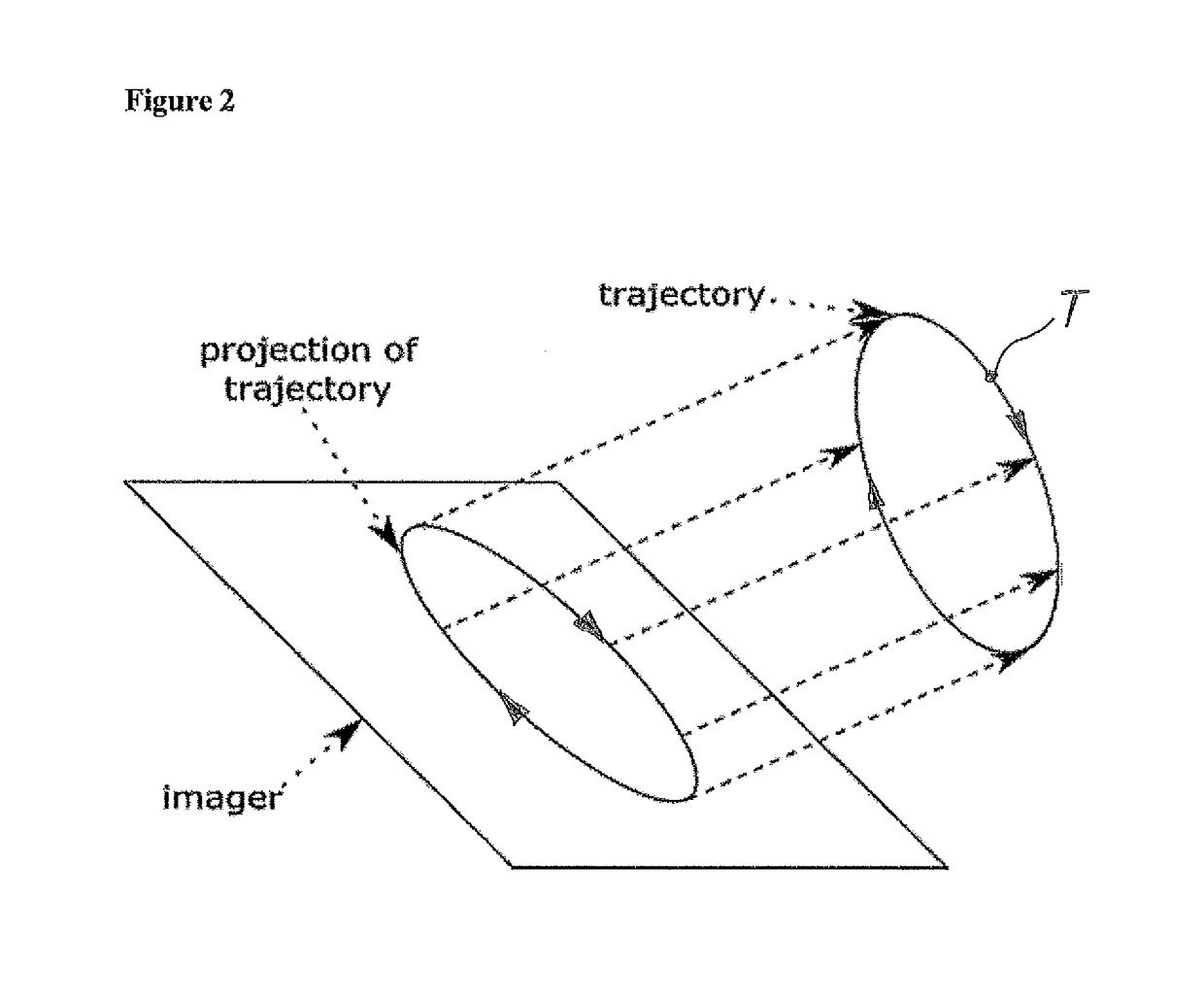Method and apparatus for determining or predicting the position of a target
- Summary
- Abstract
- Description
- Claims
- Application Information
AI Technical Summary
Benefits of technology
Problems solved by technology
Method used
Image
Examples
Embodiment Construction
[0105]FIG. 1 shows in an abstract form a positional change of a surrogate signal being an upper sinusoidal wave. The surrogate signal might be the detected positions of one or more markers being located on the body surface of a patient, the body surface moving, for example due to a breathing motion. As can be seen on the left side of FIG. 1, the surrogate signal is a periodic signal having repeated cycles 1, 2, . . . .
[0106]Below the surrogate signal there is shown as another sinusoidal signal the position of a target also moving due to a vital motion, such as a breathing motion. Same as the above surrogate signal, the below target position performs a periodic movement.
[0107]If the target's position at a specific time is correlated with the marker position or surrogate signal, then a target-marker-model TMM or in an abstract manner a correlation model can be defined specifying the relation between the detected surrogate signal (e.g. movement of the body surface) with the movement of...
PUM
 Login to View More
Login to View More Abstract
Description
Claims
Application Information
 Login to View More
Login to View More - R&D
- Intellectual Property
- Life Sciences
- Materials
- Tech Scout
- Unparalleled Data Quality
- Higher Quality Content
- 60% Fewer Hallucinations
Browse by: Latest US Patents, China's latest patents, Technical Efficacy Thesaurus, Application Domain, Technology Topic, Popular Technical Reports.
© 2025 PatSnap. All rights reserved.Legal|Privacy policy|Modern Slavery Act Transparency Statement|Sitemap|About US| Contact US: help@patsnap.com



